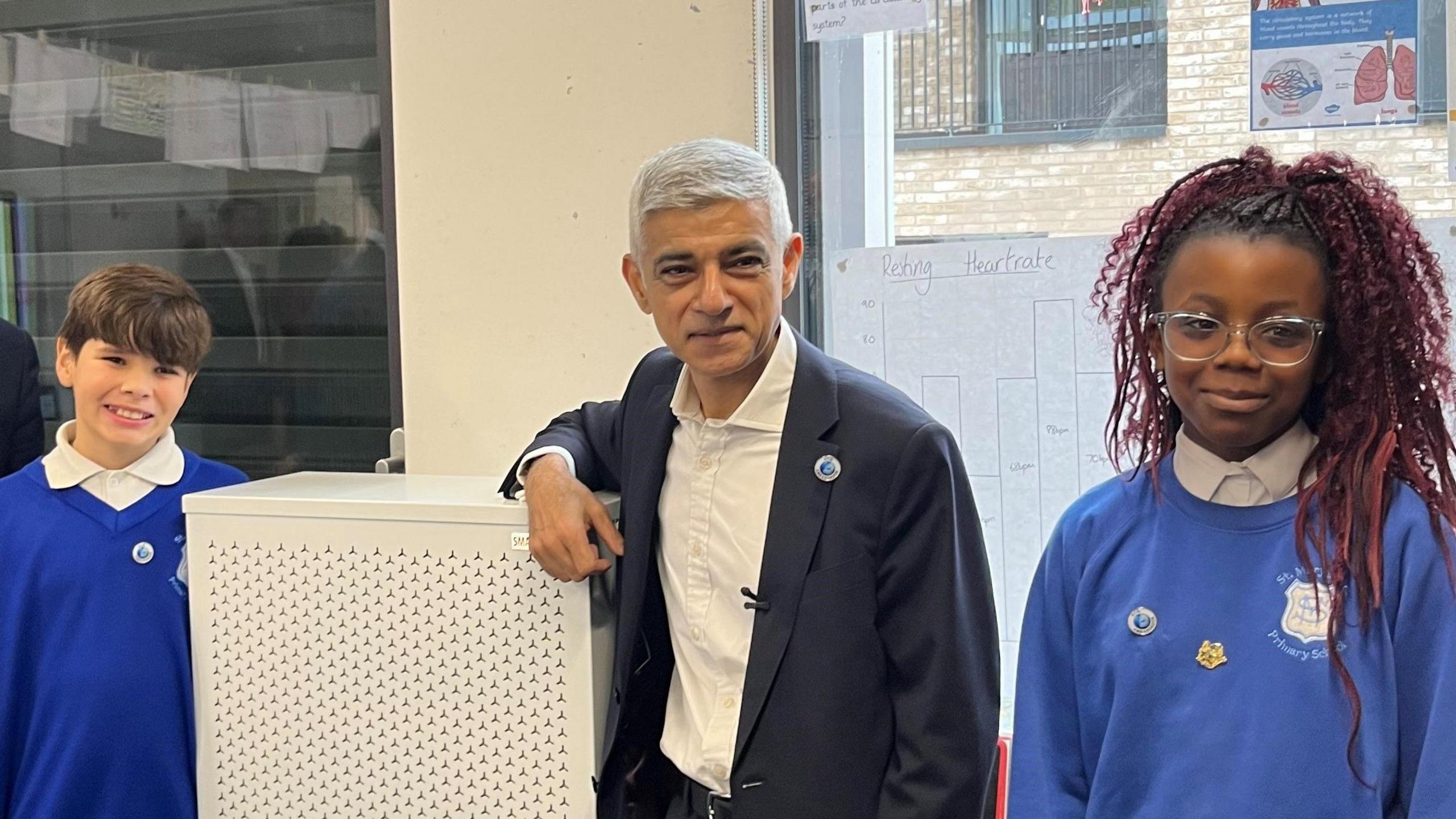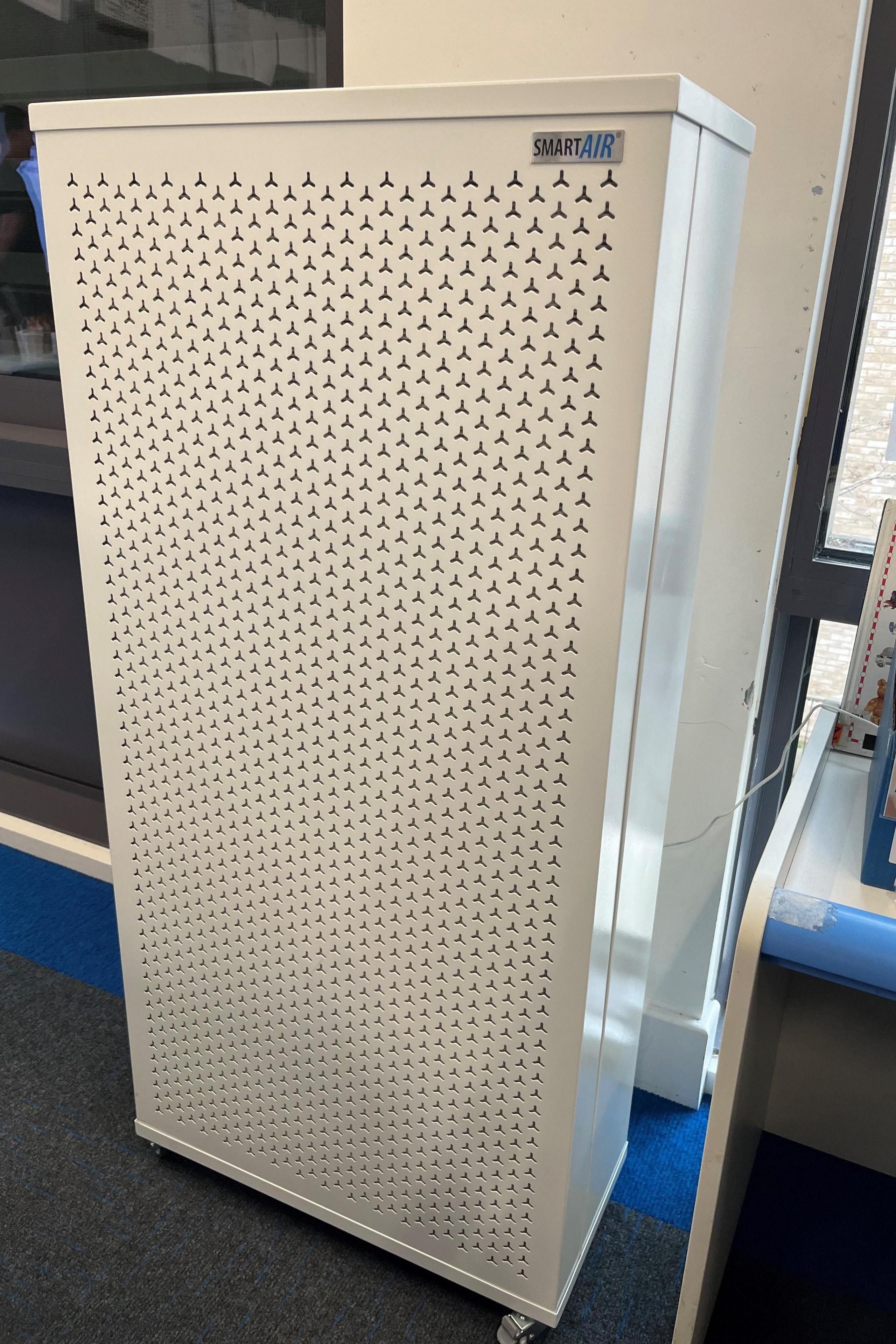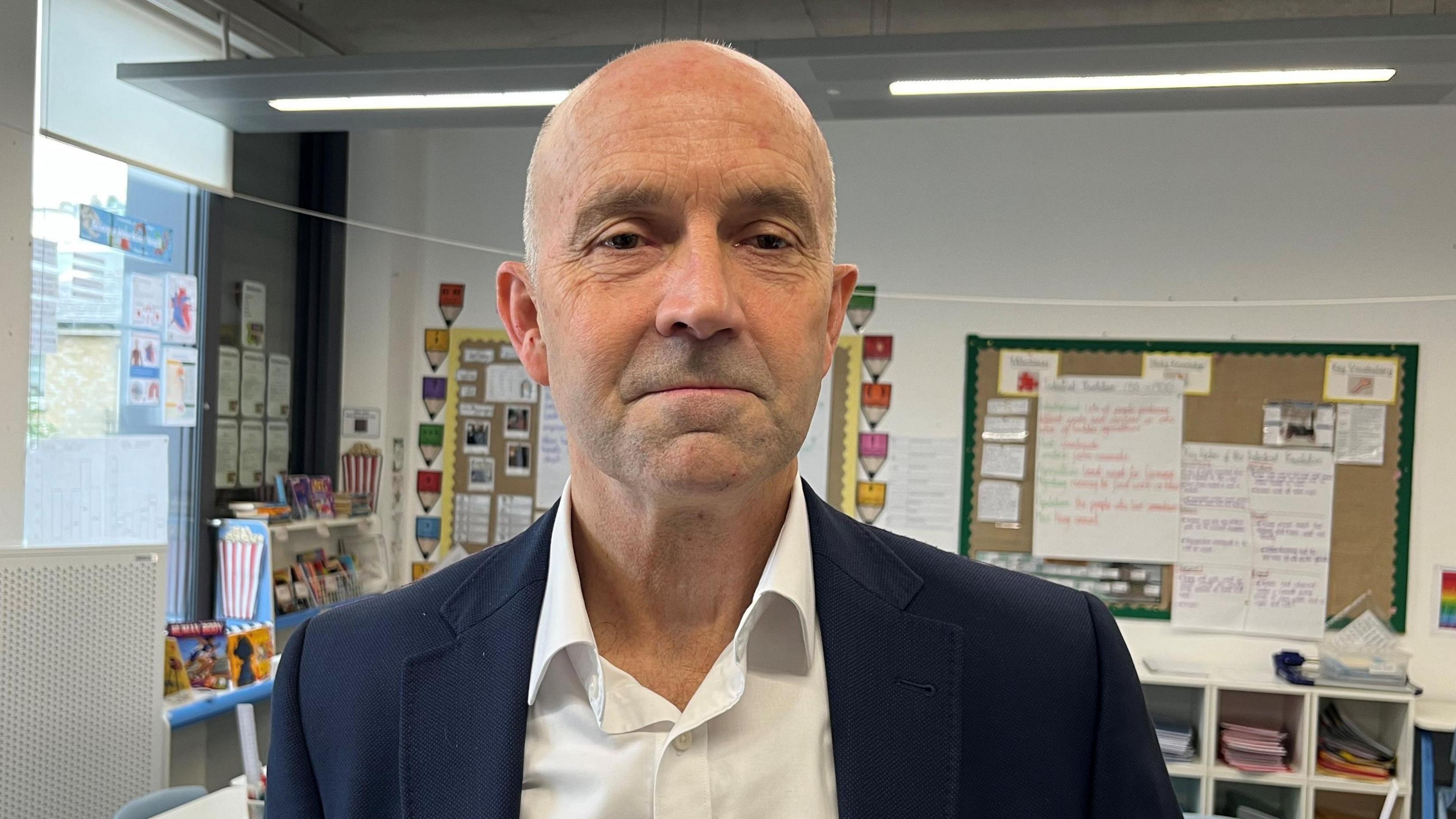London schools to get filters to cut air pollution

Sir Sadiq Khan, pictured with pupils Victor and Funmi, says the air filters will be "life-changing"
- Published
Hundreds of London schools are set to receive new air quality filters in a £2.7m scheme designed to reduce pollution in classrooms and protect children's health.
Mayor Sir Sadiq Khan said the rollout, covering more than 200 schools across the capital, could cut harmful particulate matter (PM2.5) inside classrooms by up to 68%.
Speaking at St Mary's RC Primary School in Battersea, south-west London, one of the first schools to receive the filters, Sir Sadiq said they could have a "life-changing" impact on young people.
The City Hall Conservatives said the rollout was "welcome news" for air quality but would be countered by the removal of of congestion charge exemptions for electric vehicles.
"We know we've made massive progress reducing air pollution in London, doing in eight years what experts said would take childhood years," the mayor said.
"But we know there are still particulate matter pollution inside our classrooms, which leads to kids having respiratory illnesses, taking time off school and doing less well at school."
City Hall said about 70 schools had already received filters, with the rest due to follow "over the course of the next few weeks".
The rollout will prioritise schools in areas with the highest levels of deprivation and air pollution.

The filters are being rolled out to more than 200 schools
Sir Sadiq said the programme, first announced ahead of the 2024 mayoral election, had been delayed while officials tested which types of filters were most effective.
St Mary's head teacher, Jared Brading, said the school received its filters just before the summer and fitted one in every classroom.
He said the school had already taken several steps to tackle pollution, including putting up a wall of plants to block emissions from nearby traffic, discouraging parents from leaving engines running outside the gates and installing air quality monitors.
"I hope [the air quality filters] are the part of the final piece in the jigsaw in how we've tried to make the air at St Mary's even better," Mr Brading added.

Head teacher Jared Brading says pupils have been left "nonplussed" by the filter units
He said the pupils had been left a "bit nonplussed about the big white box in the corner".
"They hear a distant hum now and again, but they're now more aware of what it actually does and how good it is for them," he said.
Victor, an 11-year-old at the school, told BBC London that the filter helped him feel "safer in general" about the air quality in his classroom.
His classmate Funmi, also 11, said: "It makes me feel like my school cares about me and how my breathing is.
"They want me to have clean air in my classroom which helps me concentrate."
London nitrogen dioxide levels fall to legal limit
- Published1 October
Toxic air 'causing more child hospital admissions'
- Published8 August
Pollution causes harm at all stages of life - report
- Published17 April 2023
Thomas Turrell, a Conservative assembly member, said the filters were "good news" for classrooms.
However, he said they would not reduce air pollution more widely and that the mayor was "pulling the rug" from under electric-vehicle drivers with the removal of congestion charge exemptions.
"The mayor has to decide whether he's serious about this or not," he added.
A spokesperson for the mayor said measures like the Ultra Low Emission Zone (Ulez) had been effective in reducing air pollution.
City Hall research found classrooms with the filters recorded up to two-thirds lower levels of PM2.5 - a pollutant linked to asthma, heart disease and other illnesses - compared with those without.
The mayor said the filters were part of wider efforts to make London's air cleaner, pointing to recent progress on nitrogen dioxide levels.
Listen to the best of BBC Radio London on Sounds and follow BBC London on Facebook, external, X, external and Instagram, external. Send your story ideas to hello.bbclondon@bbc.co.uk, external